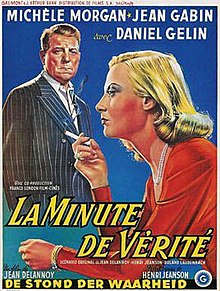
Vincent Elbaz is a French actor. He has appeared in many French television shows and films.

God's Thunder or Le Tonnerre de Dieu is a 1965 French-Italian-West German comedy-drama film directed by Denys de La Patellière and starring Jean Gabin and Michèle Mercier.

Paul Meurisse was a French actor who appeared in over 60 films and many stage productions. Meurisse was noted for the elegance of his acting style, and for his versatility. He was equally able to play comedic and serious dramatic roles. His screen roles ranged from the droll and drily humorous to the menacing and disturbing. His most celebrated role was that of the sadistic and vindictive headmaster in the 1955 film Les Diaboliques.

La Vérité sur Bébé Donge is a 1952 French drama thriller film directed by Henri Decoin and starring Danielle Darrieux and Jean Gabin. The plot is essentially the analysis of a couple's marriage that has broken down; the film is based on the novel by Georges Simenon.

La Marie du port is a 1950 French crime film directed by Marcel Carné and starring Jean Gabin, Blanchette Brunoy and Nicole Courcel. The screenplay was written by Georges Ribemont-Dessaignes and Jacques Prévert, based on the 1938 novel of the same title by Georges Simenon. The music score is by Joseph Kosma and the cinematography by Henri Alekan. It was made at the Saint-Maurice Studios in Paris and on location around Cherbourg in Normandy. The film marked a comeback for Carné after the poor reception of his previous film Gates of the Night in 1946 and several subsequent unsuccessful attempts to launch projects.

Jean Aurenche was a French screenwriter. During his career, he wrote 80 films for directors such as René Clément, Bertrand Tavernier, Marcel Carné, Jean Delannoy and Claude Autant-Lara. He is often associated with the screenwriter Pierre Bost, with whom he had a fertile partnership from 1940 to 1975.
Christine Fabréga was a French actress and television personality.

Robert Dalban was a French actor. His work included stage acting, roles in TV shows and dubbing American stars. Moreover, he was a fixture in French cinema for many decades.

The Blue Veil is a 1942 French drama film directed by Jean Stelli and starring Gaby Morlay, Elvire Popesco and André Alerme. The film was remade in 1951.

Behind the Facade is a 1939 French drama film directed by Georges Lacombe and Yves Mirande and starring Lucien Baroux, Jules Berry and André Lefaur. The film's sets were designed by the art director Lucien Aguettand. It was shot at the Epinay Studios in Paris.
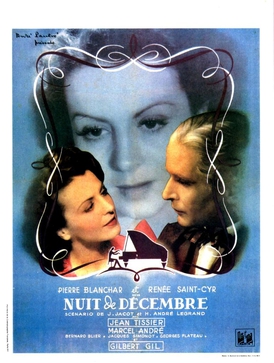
Night in December is a 1940 French drama film directed by Curtis Bernhardt and starring Pierre Blanchar, Renée Saint-Cyr and Gilbert Gil. It was shot at the Billancourt Studios in Paris. The film's sets were designed by the art directors Henri Ménessier and Jean d'Eaubonne. It was Bernhardt's last French film before he left the country for America. It was given a re-release by DisCina in 1949.
Gustave Honoré Hamilton was a 20th-century Belgian film actor.
Albert Michel (1909–1981) was a French stage, film and television actor.
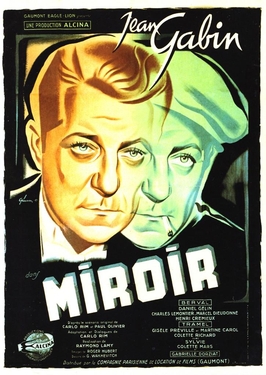
Mirror is a 1947 French crime drama film directed by Raymond Lamy and starring Jean Gabin, Daniel Gélin and Martine Carol. It was shot at the Saint-Maurice Studios in Paris. The film's sets were designed by the art director Georges Wakhévitch. It was Gabin's second film following his return to his homeland after serving in the Free French forces after the poorly-received Martin Roumagnac (1946) alongside Marlene Dietrich. The film marks a shift from the doomed men of the pre-war poetic realism that established Gabin as a star to the powerful figures he played from the 1950s onwards.

My Seal and Them is a 1951 French comedy film directed by Pierre Billon and starring Marie Daëms, François Périer and Jeanne Fusier-Gir. A separate Swedish-language version My Friend Oscar was also produced. It was shot at the Photosonor Studios in Courbevoie on the outskirts of Paris. The film's sets were designed by the art director René Moulaert.
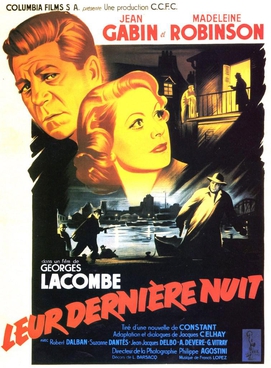
Their Last Night is a 1953 French crime drama film directed by Georges Lacombe and starring Jean Gabin, Madeleine Robinson and Robert Dalban. It was shot at the Billancourt Studios in Paris and on location around the city. The film's sets were designed by the art director Léon Barsacq.

The Last of the Six is a 1941 French mystery thriller film directed by Georges Lacombe and starring Pierre Fresnay, Michèle Alfa and Suzy Delair. It was shot at the Billancourt Studios in Paris. The film's sets were designed by the art director Andrej Andrejew. It is based on the 1931 novel The Six Dead Men by the Belgian writer Stanislas-André Steeman.
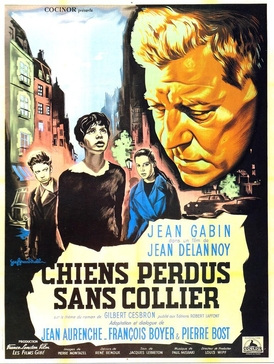
The Little Rebels is a 1955 French-Italian drama film directed by Jean Delannoy and starring Jean Gabin, Anne Doat and Dora Doll. It premiered at the 1955 Venice Film Festival before going on general release. It was one of the most popular films at the French box office that year, drawing over four million spectators. The film was based on the 1954 novel by Gilbert Cesbron. It was shot at the Boulogne Studios in Paris and on location around and near the city including Conflans and Provins. The film's sets were designed by the art director René Renoux.

The Shadow is a 1948 French crime drama film directed by André Berthomieu and starring Fernand Ledoux, Renée Faure and Berthe Bovy. It was based on a 1933 novel of the same title by Francis Carco. It was shot at the Saint-Maurice Studios in Paris. The film's sets were designed by the art director Raymond Nègre

Crime at the Concert Mayol is a 1954 French-Italian crime drama film directed by Pierre Méré and starring Claude Godard, Jean-Pierre Kérien and Daniel Clérice. It is set at the Concert Mayol in Paris, a cabaret that became known for its striptease shows after the Second World War. The film intercuts between musical numbers in the venue and the investigations of the detectives offstage.
